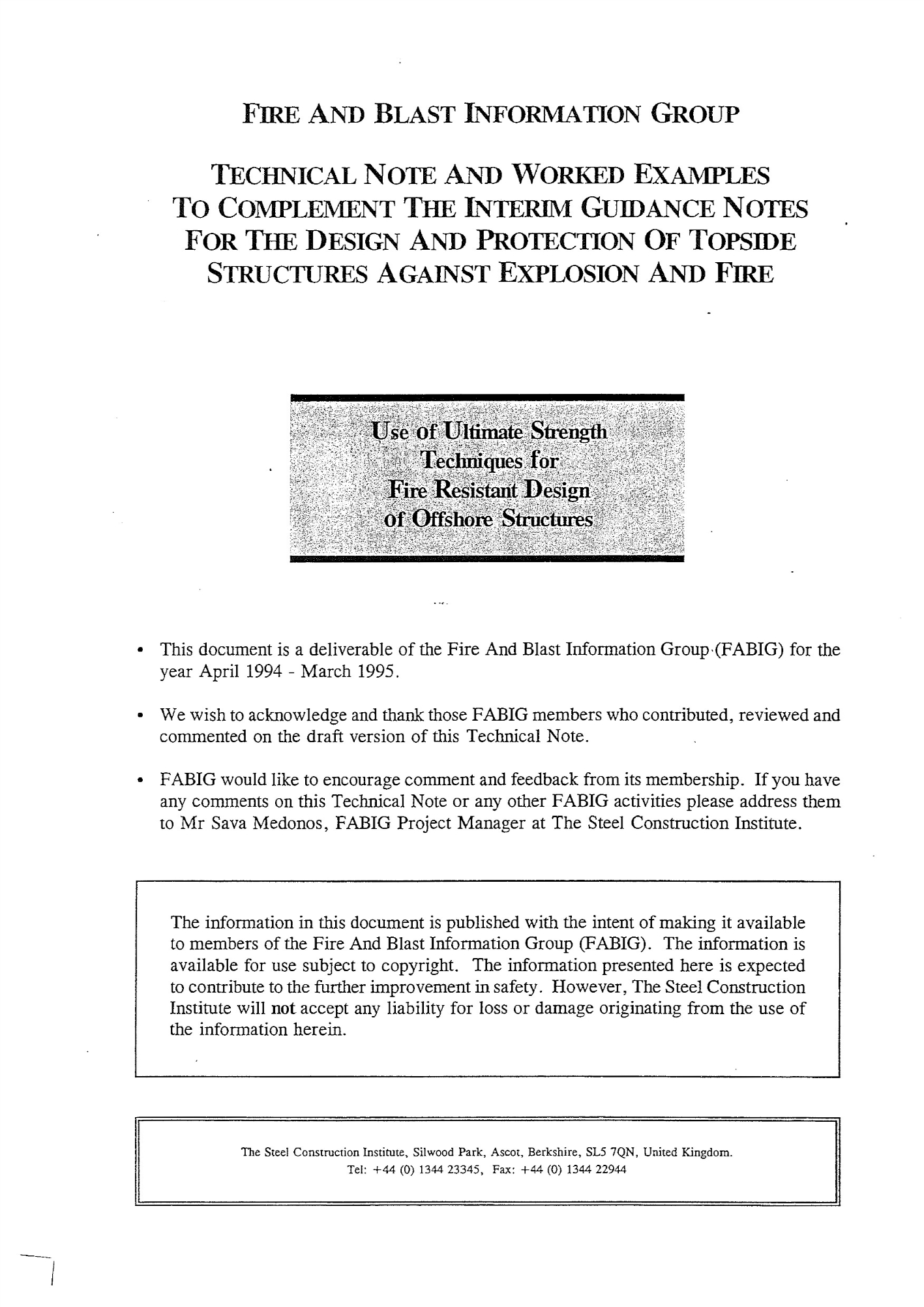Technical Note 03
Use of Ultimate Strength Techniques for Fire Resistant Design of Offshore Structures

FABIG Members: Log-in to access all FABIG resources LOG IN
SUMMARY
A structure subjected to a fire progressively loses its strength until the structure collapses and becomes unusable. Advanced numerical non-linear methods enable to perform ultimate strength analyses whereby progressive failure of members is predicted: this is termed progressive collapse analyses. The Interim Guidance Notes (IGN) refer to progressive collapse in Section 3.5. Since the publication of the IGN, a greater understanding in the field of progressive collapse has been developed. The objective of a progressive collapse analysis in relation to a fire event is to determine the failure or the time to failure of the structure.
This Technical Note has been prepared to focus on the subject of progressive collapse and supplements Sections 3.5, 4.4 and 4.6 of the IGN, and also Sections 3, 7 and 8 of Technical Note 1 describing the "Fire Resistant Design of Offshore Topside Structures". In order to provide guidance for selection and use of a suitable progressive collapse analysis system and progressive collapse modelling, this document introduces the basic theory behind progressive collapse and presents various methods for performing a progressive collapse analysis.
The document considers in turn the setting of performance standards to meet the present goal setting approach to safety on offshore installations, the thermal response of structures and components, the strength response of structures and components, combined effects and finally examples describing various approaches.
- INTRODUCTION
- BACKGROUND
- PERFORMANCE STANDARDS
- In General
- Definition of Performance Standards
- Terminology
- SYSTEM RESPONSE
- THERMAL RESPONSE
- Heat Flux Loading
- Thermal Models of the Fire
- Thermal Response of Structures and Plant
- Calibration of Heat Transfer Properties
- Space Frame Thermal Model
- Solid Thermal Model
- Shell Thermal Model
- Comparison of the Spaceframe, Solid and Shell Thermal Models
- Thermal Analysis
- Thermal Response of Individual Structural and Plant Components
- STRUCTURAL RESPONSE
- Modelling of the Progressive Collapse
- Modelling of Thermal Effects
- Structural Model
- Structural Response of Components to Mechanical Loading from Fire
- PREDICTION OF STRUCTURAL FAILURE
- In General
- A Simplified Approach to Structural Response
- Failure Modes
- Some Applications of Failure Criteria
- COMBINED EFFECTS
REFERENCES
APPENDICES
- EXAMPLE 1 - Firewall
- EXAMPLE 2 - Design of Fire Resistant Platform Topside
- EXAMPLE 3 - Design of Offshore Structures Subjected to Fire
Online purchase options:
Non-Members of FABIG are able to purchase PDF copies of the FABIG Technical Guidance documents.